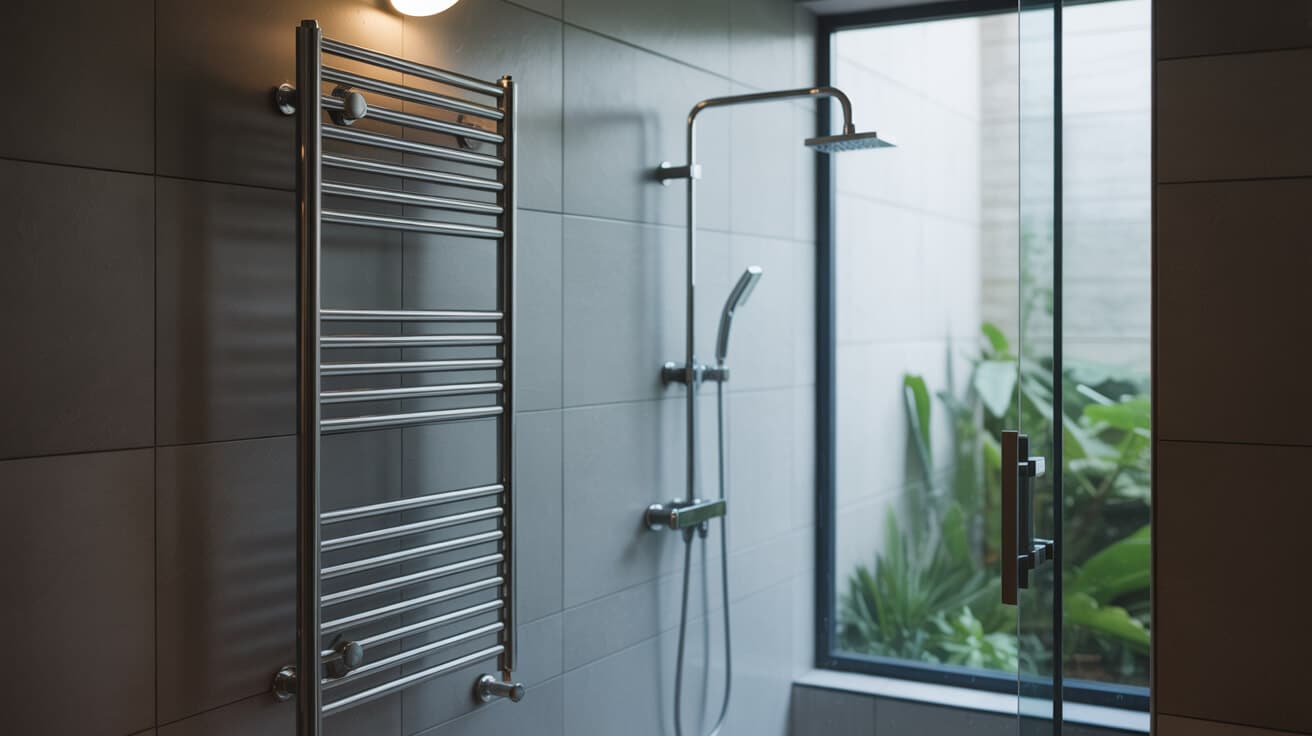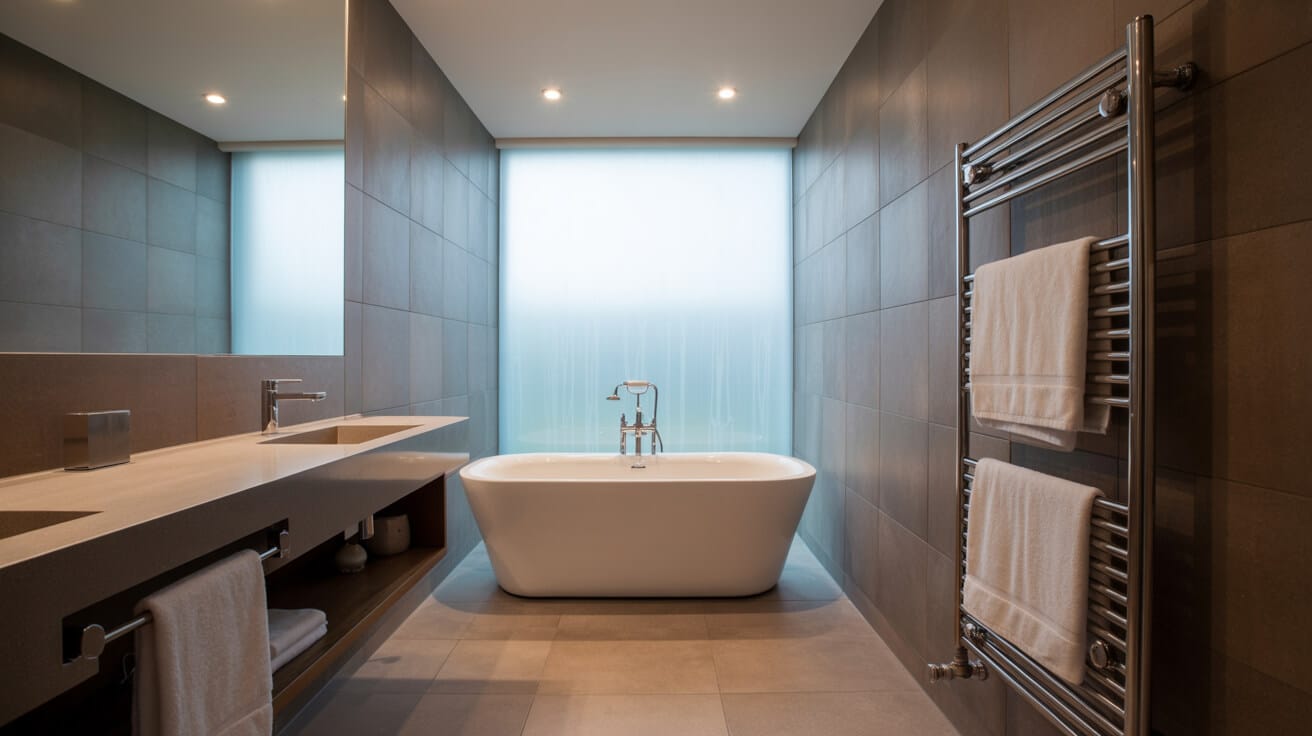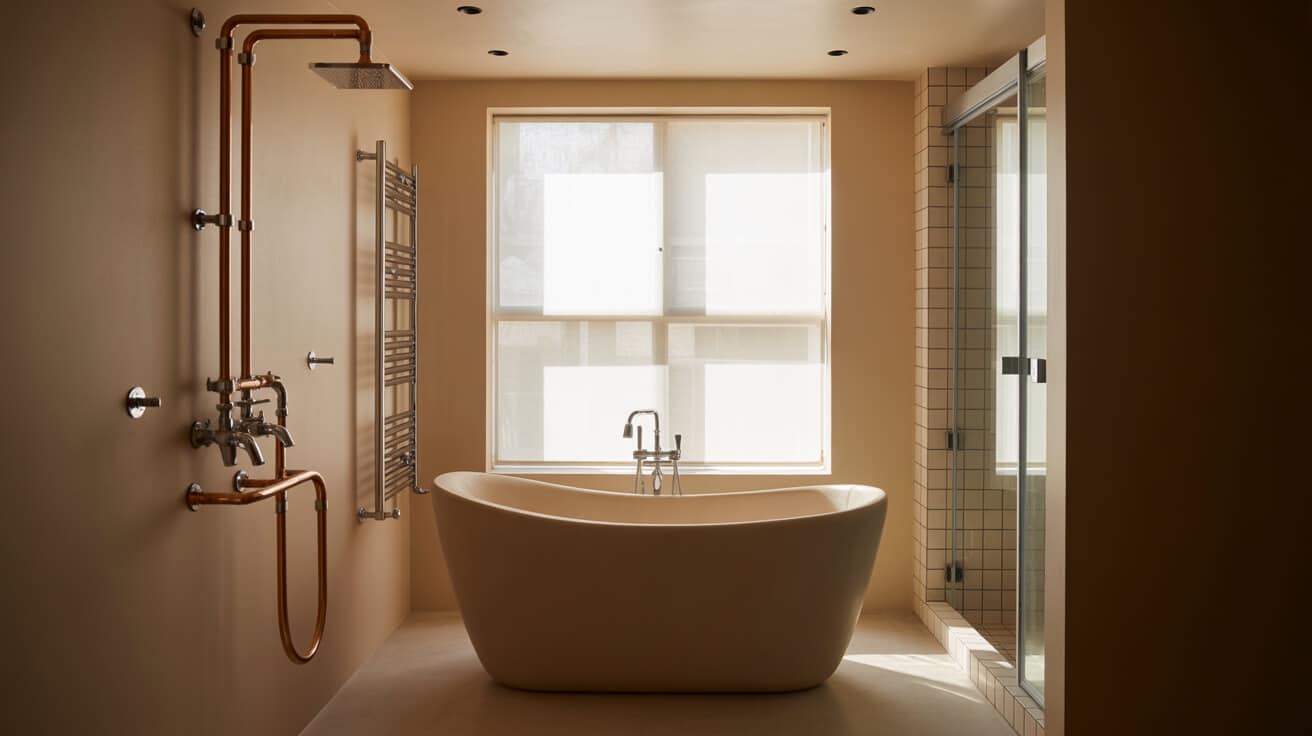Whether managing a residential development, overseeing public sector facilities, or planning private renovations, adherence to Part G is non-negotiable. Today’s building projects integrate regulatory benchmarks not just as legal hurdles but as baseline expectations for occupant protection, operational reliability, and long-term asset value. Companies such as Plumbers 4U ensure your organisation’s compliance by emphasising safety, transparency, and WRAS-approved solutions in both new work and ongoing service.
Lead
Part G of the Building Regulations specifies statutory criteria for the sanitary design, water efficiency, and hot water safety of buildings within England and Wales. These rules shape the foundational practices of construction and refurbishment by mandating universal access to safe water, minimising scald risk, and limiting water wastage. Recognised by all sector participants—from architects and developers to local authority inspectors and licenced engineers—Part G is integral to safe, sustainable development in the built environment.
Sanitary provision rules apply across property types, including single-dwelling refurbishments, multi-unit landlord portfolios, care environments, and commercial premises. Every stakeholder from the property manager to the end-user benefits from a harmonised framework that delivers predictable performance, mitigates legal exposure, and strengthens asset longevity.
Etymology or name origin
The term “Part G” refers to one section of the alphabetized Building Regulations codified under English and Welsh law. Each part covers a separate theme, with “G” denoting sanitation, hot water safety, and water efficiency. The document “Approved Document G” supplements the legal language, providing in-depth technical parameters, examples, and compliance checklists.
Sanitary vocabulary in the regulatory context includes distinct terms such as “sanitary convenience” (toilet, urinal), “water efficiency” (litres per occupant per day), and “hot water supply safety” (maximum temperatures at point of use). These definitions ensure clarity for designers, inspectors, and contractors navigating compliance requirements and managing practical site delivery.
Overview and context
The scope of Part G covers the full spectrum of requirements necessary to safeguard water quality, access, and use within buildings. It addresses both the provision (number, location, and type) and the safety of sanitary features, such as toilets, baths, sinks, showers, and bidets, emphasising user health and operational resilience. Water supplies under Part G must be wholesome for human consumption and delivered in a way that avoids contamination.
Part G implicitly supports public health, basic comfort, and building utility. In your company’s projects, requirements become applicable when constructing new premises, executing major refurbishments or conversions, or altering the use of a building. The standards integrate with local planning requirements, energy, accessibility, and environmental compliance—forming a holistic system overseen by local authority building control and enforced through both mandatory notifications and periodic site inspections.
Statutory responsibilities fall on those commissioning and executing works, whether a large-scale developer engaged in urban renewal, or a landlord upgrading a single flat. Your compliance journey often begins at project inception and only ends after satisfactory certification, continuity of maintenance, and documentation tracking.

History
Origins and policy drivers
The roots of UK sanitation law extend to 19th-century public health reforms informed by outbreaks attributed to poor housing and water systems. Initial measures standardised drainage, latrine access, and clean water availability. Over decades, incidents of child scalding, cholera outbreaks, and severe droughts redefined baseline expectations for building safety and water efficiency.
Regulatory milestones
Modern Part G arose from the 1965 Building Regulations and subsequent amendments, becoming a distinct document in 1991. Major updates (2010, 2015) expanded its purview to cover not only water quality and fixture provision but also safety-critical devices (e.g., thermostatic mixing valves), temperature regulation, and efficiency standards—setting a new industry baseline.
Recent and forthcoming changes
Recent years have emphasised sustainability—with water efficiency limits (now 125 litres per occupant per day) and specific rules for the use of reclaimed or alternative water sources. Ongoing consultations seek to tighten standards further, introduce smarter benchmarks for resource use, and clarify technical interactions with companion regulations (notably Parts H, L, and P). Changing demographics, increased rental occupancy, and greater legal accountability for landlords and property managers shape how your organisation approaches compliance planning.
Concept and description
Framework and structure
Part G consists of six interlocked sub-parts:
| Section | Focus Area | Summary |
|---|---|---|
| G1 | Cold water supply | Safe, potable supply to all outlets |
| G2 | Water efficiency | Aggregate use capped (e.g., 125l pp/day) |
| G3 | Hot water supply, systems | Safe delivery (temperature/pressure checks) |
| G4 | Sanitary conveniences, washing | Minimum fixture numbers and placement |
| G5 | Bathrooms | Functional and accessible design |
| G6 | Food preparation areas | Hygienic water at all prep points |
Your company’s compliance process involves rigorous section-by-section checks, with each element potentially triggering additional regulatory needs—such as G3 certification for unvented cylinders or WRAS-approved fittings for every potable water line.
Key components
- Water systems: Storage, distribution, backflow prevention
- Hot water safety: Scald-prevention, G3-certified installation, temperature and pressure relief
- Sanitary appliances: Provision for all occupancy classes; fixtures must meet accessibility and layout precepts
- Alternative systems: Rules for use of greywater, rainwater, or reclaimed sources, including isolation, signage, and risk reduction
Functionality, purpose, and applications
Benefits for occupants and stakeholders
- Health protection: Direct reduction in risk of contamination, scalding, or system failure
- Building utility: Ensured access to working, safe, and sustainable plumbing across every user scenario—from single households to large complexes
- Legal certainty: Clear roadmap for investors, landlords, and property managers
Real-world deployment
- Residential new builds/refurbishments: Baseline for all architectural designs, with explicit counts for toilets, baths, and sinks per occupant count
- Multi-tenant and institutional projects: Extra provisions for accessibility, high traffic, and vulnerable groups
- Retrofits and upgrades: Audit-driven interventions, often with legacy adaptation (e.g., TMV installation on old baths)
- Rental sector: Landlord duty to maintain compliant sanitation for tenancy certification and asset value retention
Application process and maintenance
- Design stage: Specification of layout, product standards, and compliance with local water by-laws
- Instal/commissioning: Only G3- or WRAS-accredited engineers, thorough commissioning, and documentation retention
- Ongoing maintenance: TMVs, unvented cylinders, storage tanks, and all fixtures require periodic re-inspection, usually on a scheduled maintenance plan
Classifications, types, and variants
Document subdivisions
Understanding whether your building or project falls under domestic or non-domestic guidelines determines both minimum requirements and which additional codes come into effect (e.g., G5 for bathrooms in residential only).
Property class distinctions
- Dwelling houses/flats: Fixture minimums referenced per bedroom/occupant number; must meet both G1–G5 standards
- Multiple occupancy (HMOs, hostels, care homes): Enhanced layouts and redundancy for high-traffic or special user needs
- Schools/commercial premises: Varied WC and wash basin ratios, layout constraints, and sometimes public access rules
Product and fixture certifications
- G3 certification: Required for unvented hot water system design and installation
- WRAS approval: Required for all potable water fittings and appliances
- TMV (thermostatic mixing valve) types:
- TMV2: Domestic/commercial
- TMV3: Healthcare/special care scenarios

Systems, tools, and methodologies
Compliance verification
Water use calculators, CAD-based compliance overlays, and manufacturer-provided specification sheets are integrated during the design and pre-sign-off phases for your projects. Plumbers 4U and similar companies employ these tools to ensure all installed systems comply before handover.
Typical installation sequence
- Product selection: Choose only WRAS-approved or equivalent-certified components.
- G3 works: Engage certified engineers for hot water systems; collect all commissioning documents.
- On-site testing: Pressure, flow, and temperature checks on all outlets (especially those for vulnerable users).
- Post-instal monitoring: Embedded TMVs, stored water quality, and regular maintenance per manufacturer and regulatory cycles.
Maintenance and verification
- Annual service for hot water cylinders
- Six- to twelve-monthly checks for TMV operation, especially in higher-risk settings
- Logbook and certificate retention for landlord and property management audit trails
Stakeholders and entities involved
Project participants
- Certified plumbers and engineers: Execute the installation, provide commissioning, and maintain records
- Landlords and property managers: Retain duty of care, especially in rental or multi-tenanted assets
- Developers and main contractors: Oversee regulation compliance for new builds and major conversions
- Local authority building control staff: Review drawings, carry out site inspections, and sign off final works
- Specialty consultants: Provide advice on challenging settings (historic, high-density, health-sensitive)
End users
Homeowners, tenants, facility users, and care setting residents all benefit from the reduced risk, higher comfort, and property value support provided by robust compliance.
Legal, regulatory, and ethical considerations
Related statutes
- Drainage (Part H), energy efficiency (Part L), accessibility (Part M), electrical safety (Part P):
- Water Supply (Water Fittings) Regulations 1999: for all plumbing inlets, outlets, and appliances
- Legionella risk (ACoP L8): Overlaps for tank design, outlet specification, and ongoing inspection cycles
Certification and risk
- Building control: Mandatory notification on controlled works, certification required for occupation certificate
- Penalties: Failure to comply may result in fines, prohibition notifications, compulsory remediation orders, tenant compensation, or insurance challenges
- Landlord/agent recordkeeping: Documentation must be available for letting, transfer, or statutory inspection at any time
Ethical mandate
Your company’s ethical obligations extend to providing transparent information, acting on behalf of tenant and public welfare, and aligning all decisions to the highest contemporary standards. Plumbers 4U leverages these principles throughout every client engagement.
Performance metrics, data, and measurements
Water efficiency and delivery
- Litres per person per day: 125 for standard compliant dwellings (stricter for special cases)
- Fixture flow rate benchmarks:
- Bath: ≤ two-thirds fill with up to 110 litres
- Sink/basin: tap flow ≤ 6-8 litres/min
- Shower: flow rate ≤ 8 litres/min
- WC: dual-flush, average flush ≤ 4-6 litres/operation
Hot water safety
| End Use | Maximum Outlet Temp (°C) | Regulated Control |
|---|---|---|
| Bath (domestic) | ≤ 48 | TMV2 or TMV3 |
| Sink (handwash) | ≤ 55 | Manual thermostat or mixing valve |
| Care home/hospital | ≤ 44 | TMV3 mandatory |
- Cylinder requirements: G3-compliant insulation, pressure limits, and TPRVs
Verification and audit
- Adherence verified by on-site flow/pressure measurement and document checklists before sign-off
- Maintenance intervals tracked via logbooks/control sheets
Challenges, barriers, and limitations
Technical challenges
- Legacy systems: Upgrading aged or makeshift installations often means disturbing older pipework, walls, or finishes
- Special settings: Schools, care homes, and heritage buildings require bespoke planning to balance safety, compliance, and usability
Economic and informational barriers
- Cost: Retrofit, especially in larger or segmented buildings, may entail substantial capital investment
- Knowledge gap: Awareness, especially for small landlords and owner-managers, is still variable despite best efforts from trade bodies and companies such as Plumbers 4U
Record-keeping
- Certificates, installer IDs, and product documentation: must be maintained continuously; lapses can expose you to penalty or failure at audit
Impact, influence, and legacy
Building and occupant outcomes
- Nearly universal reduction of scald and contamination injuries
- Substantial efficiency gains across regional housing stocks
- Improved tenant/permanent resident satisfaction and stability
Sector evolution
- Standardisation of product development and market supply for compliance—hot water tanks, safer faucets, and efficient dual-flush toilets now ubiquitous due to regulatory pressure
- Incentives for enhanced installer training and professionalisation
Role of compliance partners
Trusted companies like Plumbers 4U enable your company’s compliance by offering on-demand G3-certified, WRAS-approved installation, logbook maintenance, and long-term operational support.
Future directions, cultural relevance, and design discourse
The regulatory focus is shifting toward stricter efficiency metrics and greater cross-regulatory harmonisation. Engagement with water reuse, advanced appliance efficiency, and universal design for all ages and abilities signals a future where regulatory burden aligns with both cultural priorities and technological innovation.
Social trends point to enhanced scrutiny of landlord responsibilities, increased digitalization of compliance documentation, and greater user empowerment in managing water consumption and safety. Discussions in professional and policy forums reflect ongoing debate over how best to balance robust occupant protections with flexible, future-proof industry practices. The legacy and evolving impact of Part G underscore sanitation and water safety as enduring components of building design and management.

